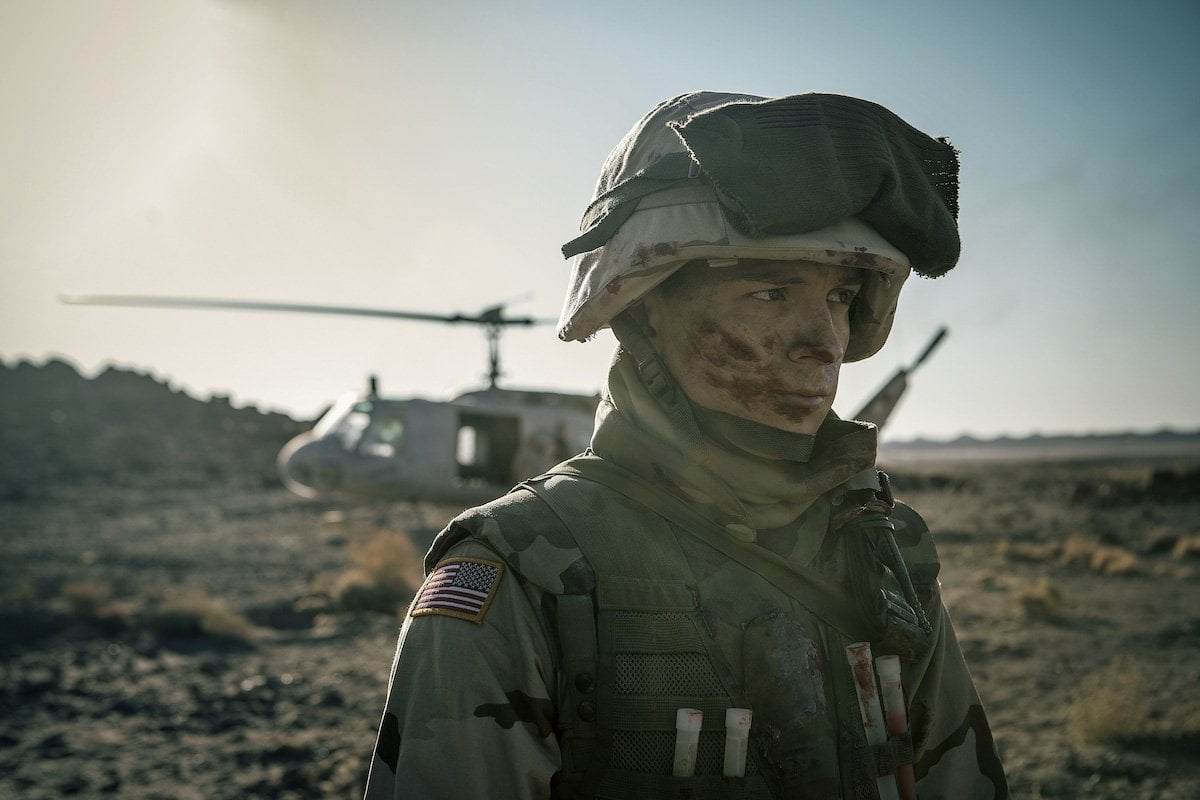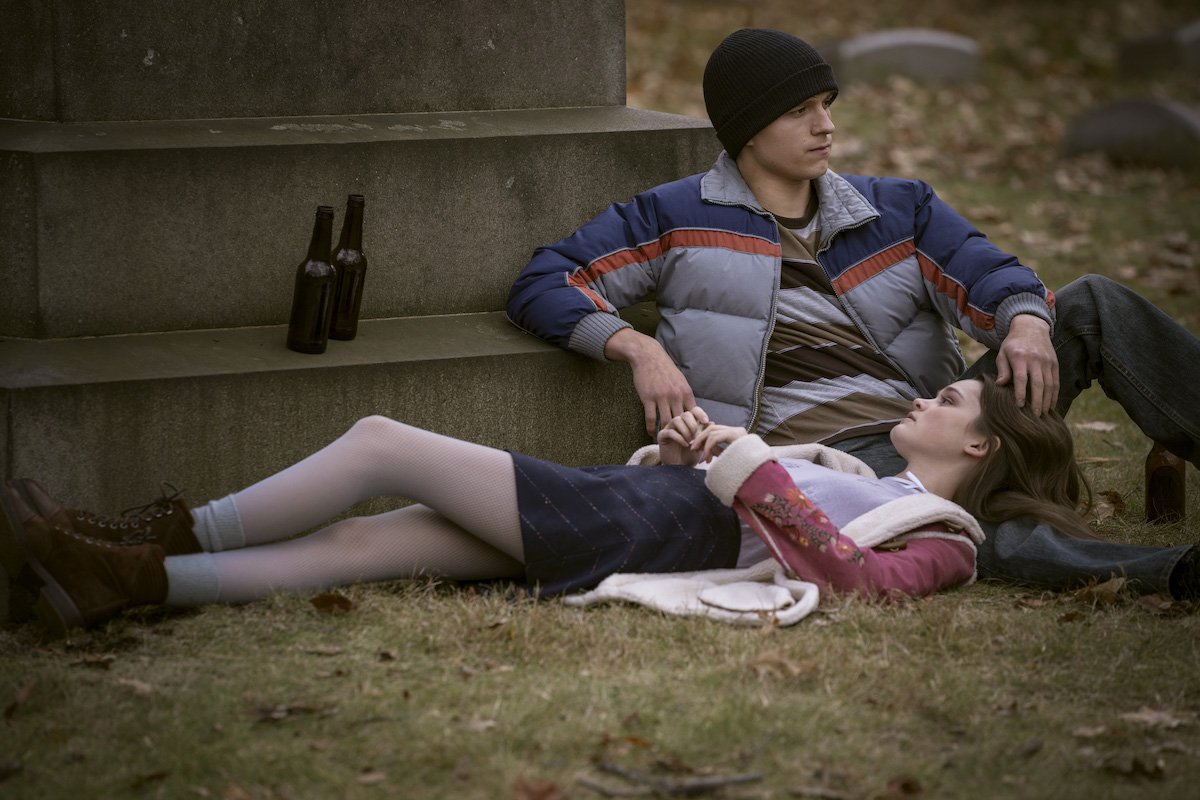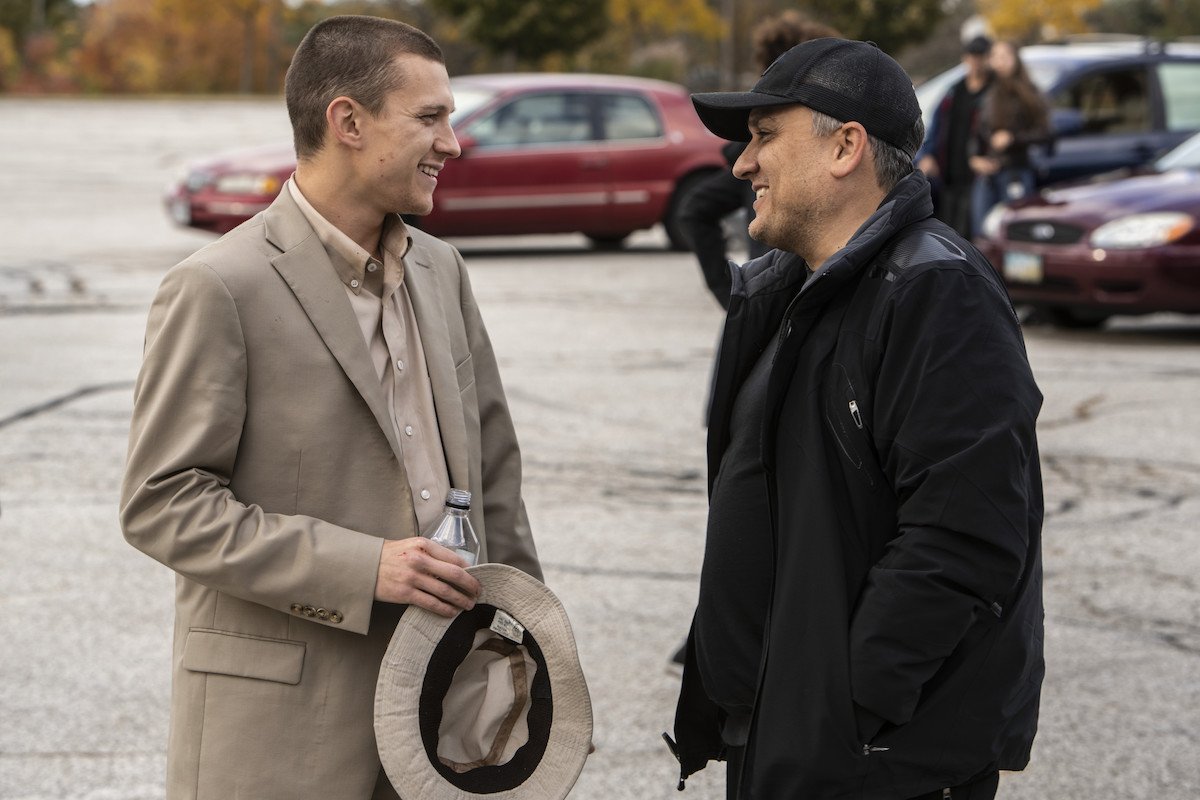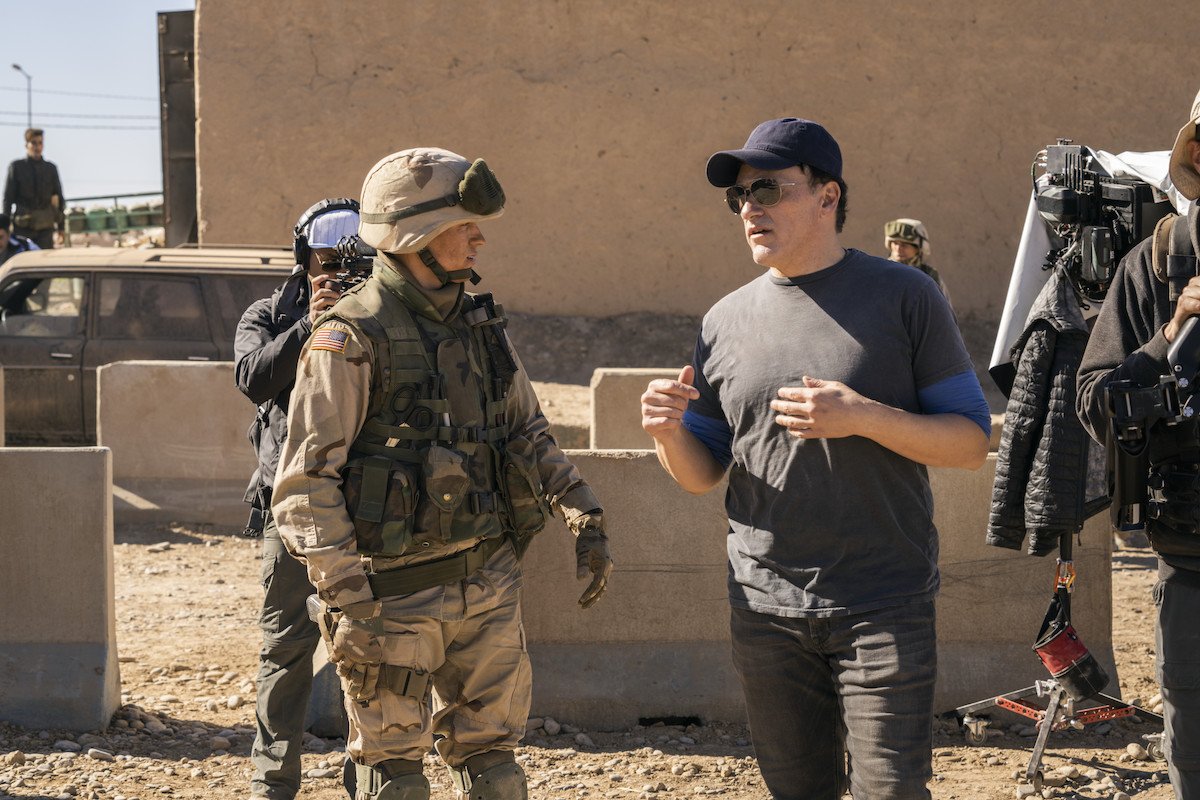
In 2018, the same year they released the mega blockbuster Avengers: Infinity War, Joe and Anthony Russo found themselves in the middle of another captivating drama: Nico Walker kept running out of minutes on the prison phone. The Russos’ production company, AGBO, was negotiating to buy Cherry, Walker’s fictionalized account of his journey from the Army to opioid addiction to robbing banks. But negotiations paused every time Walker’s time ran out.
The moviemaker siblings were immediately interested in Walker’s novel in part because he came from Cleveland, where they grew up. They were even more intrigued when they learned that Walker “traveled in a lot of the same circles and parts of the city that we did. It was just a decade behind us,” Joe Russo tells MovieMaker.
“We were fascinated that Nico had moved through the city in the same way that we had, but to a very different outcome. And we were moved by the story. It’s a tragic, modern romance filled with regret, mistakes and poor choices.”
Anthony adds, “We identified with this underdog nature of our environment growing up in Cleveland. Growing up in the Rust Belt, you have a sense of decay around you, and you have a sense that the place feels a little less economically vibrant than you want it to be. Coming out of an environment like that, we respond to a lot of fiction that speaks to that experience.”
Cherry became a bestseller that received near-universal acclaim for its Charles Bukowski-esque narration and the unflinching, matter-of-fact, and frequently comical way Walker addressed real-world horrors. Walker, who was arrested in 2011 for a string of bank robberies, wrote the novel in prison and was released in 2019.
The film adaptation is the Russos’ directorial follow-up to Avengers: Endgame, which resolves more than a decade of Marvel storylines. It is a smaller story, with more earthbound stakes, and deepy important to them both.
“It was a very personal subject matter for us, because we have people in our family who have died from opioid addiction,” Joe says. “We have other people who are still recovering. Ohio is ground zero for the existential crisis that’s motivating this epidemic.”

Tom Holland in the Iraq War segment of Cherry, directed by Joe and Anthony Russo. Photos courtesy of Apple
‘So Damn Likable’
Walker’s narrator in Cherry is unnamed, and Joe, Anthony and co-writers Angela Russo-Otstot (their sister) and Jessica Goldberg (The Path) came to call the lead “Cherry.”
Tom Holland was cast in the role after Joe and Anthony cast him as Peter Parker/Spider-Man in the second of four Marvel movies they directed: 2016’s Captain America: Civil War.
What can audiences — primarily familiar with his Spider-Man performances — expect from Holland in Cherry?
“Audiences haven’t seen him do anything like this yet. Because of the difficulty of the story and the complexity of the choices of the lead character, we knew we wanted somebody very empathetic in that role, so that you would go with them on this journey, and you would understand, you’ll be able to sympathize with him as he’s moving through these difficult situations. Tom delivers on that. He’s just so damn likable,” Anthony says.
Both brothers were impressed.
“He brought a level of commitment on an acting level that surprised even Joe and I — even though we knew how good he was. He gained and lost a lot of weight when he needed to, depending on what phase of the film he was in. He thoroughly researched addiction and veterans’ experiences with PTSD. He sunk deeply into this character, and you see it on screen. He’s quite remarkable in terms of how believable he is, as somebody who came from a different place than from where Cherry came from,” Anthony says.

Tom Holland and Ciara Bravo in Cherry, directed by Joe and Anthony Russo.
Adapting Cherry
Joe, Anthony, Russo-Ostot, and Goldberg came up with a few ground rules during the adaptation process, including that everything had to be visually rooted in Cherry’s point of view. They also determined that the emotional center of the film would be the love story between Cherry and Emily (Ciara Bravo).
“What’s so tricky about this love story is that Emily is seen from his point of view,” Russo-Ostot explains. “That’s all we know about her. Anytime we see her without Cherry, it’s him imagining her in that moment. Anthony and Joe do such nuanced things, like when he’s on the phone with her from Iraq, her voice sounds as it does on the phone, even when they cut to her — it’s all limited to his perspective. In some ways it sounds limiting, but it was creatively freeing, because it allowed us to look at this character and really dimensionalize him and think about ways to draw as many lines of empathy as possible to him.”
The inner monologue that guides the novel led to many gems that Russo-Ostot and Goldberg could insert directly into the screenplay, but this was by no means a straightforward plug-and-play adaptation process.
“His inner monologue is frequently incongruous with his experiences and his environment,” Anthony says. “It provides a perspective on those experiences and environment that you couldn’t get any other way, except through that interior monologue.”
The film is broken into six chapters, each of which has its own distinct visual identity.
“Each chapter uses different lenses, different camera techniques, different set design, different color palette, so that the tone can be expressed in different ways,” Joe explains.
Cherry’s point of view also informs certain stylistic flourishes and theatrical elements. The opening prologue clues the audience in on these elements. We’re introduced to Cherry deep in the throes of addiction, already robbing banks to fund his habit. As a sweaty, sleep-deprived Cherry enters the bank, his voiceover explains a few things a viewer should know about robbing banks. Then, in a break of the fourth wall, Cherry turns to the camera to explain that wearing a mask is largely symbolic for him: “It’s no secret what my face looks like.”
That kind of nonchalance stood out when Joe and Anthony first read Walker’s novel.
“It wasn’t a glamorous version of bank robbery. It was an understated, almost mundane version of bank robbery in many ways, and we found that refreshing,” Anthony says.

Tom Holland and Joe Russo share a moment on the set of Cherry. Main image: The Russos and Holland on the set of Cherry
Basic
Among the six chapters, a standout is “Part Two: Basic.” All goes awry when Emily breaks up with Cherry rather than acknowledge her budding love for him. Joe says this is due to her “intimacy issues,” which are alluded to but never explicitly fed to the audience.
“You’ve got this particularly sensitive young man who is searching for meaning, and he finds it in a girl, and the girl breaks up with him, and then he goes to join the Army. It’s such a big American tragedy,” Goldberg says.
A heartbroken Cherry heads off to basic training. Cinematographer Newton Thomas Sigel shoots the chapter with a single 12mm wide lens, a 1:66:1 aspect ratio, and washed-out colors. “The first part of the film is him falling in love with Emily, and there’s a certain wonderment and magical realism to that. But once he goes to boot camp, we alter the aspect ratio to heighten the absurdism that he felt about being trained poorly, and being so ill-prepared for the death and mayhem that was going to come,” Joe explains. “And then we pull some of that absurdism into Iraq, but also an element of horror starts to creep its way into the movie, and then there’s full horror and PTSD, post-Iraq. These are all using theatrical techniques in different ways to underscore what the character is going through and what he’s feeling, and we wanted the audience to go on the journey with him.”
Also read: Ciara Bravo Bridges Two Worlds in Cherry
Drill sergeants pepper Cherry and the other hapless recruits with a bevy of insults, which flash on the screen in red block text as rapidly as the drill sergeants spit them out. Cherry observes:
“I started to get this weird feeling like it was all just make-believe. That we were just pretending to be soldiers. The drill sergeants were just pretending to be drill sergeants. And the Army was pretending to be the Army.”
The chapter concludes with Cherry, as the platoon guidon bearer, forced to perform the robot during the recital of the company cheer, while his dry voiceover gives the audience unsolicited advice: “So don’t ever join the fucking Army.”
Immediately following that line, the screen is awash with red, and a catchy classic rock guitar riff starts up. “Part Three: Cherry” appears on screen, and suddenly we’re looking down on a fleet of Humvees, tearing through the desert. The transition reminds us just how good the Russos are at creating Big Movie moments.

Tom Holland and Anthony Russo in Morocco for the war segment of Cherry
“We’re coming off the most absurd section of the movie, and we brought a specific style to that training section, which makes the whole thing feel very unreal — in the spirit of that ‘Army pretending to be the Army’ quote — and then we smash that into something that feels very hardcore realism,” Anthony says.
“That gear-shifting is something that we’ve always liked a lot as storytellers and filmmakers. We like how it can subvert what the audience is feeling at any moment, and push them in another direction, unexpectedly.”
Although they were working at a lower budget range than the Avengers films, they brought over many of their Marvel collaborators for this chapter, filmed in Morocco.
“Everybody involved has worked at all different budget levels, as have we,” Anthony says. “Sometimes having less resources is a great spur to creativity to come up with creative solutions. But at the same time, we did spend a lot of the resources we did have on those sequences, because we did want to deliver on that
big epic experience of what war is, what warfare is, and the reality, the scope, and the terror of it.”
Joe says the realism emphasizes that Cherry was “a kid who made a decision to go fight in a war he didn’t necessarily believe in,” which resulted in Cherry “losing connection with his internal compass. And it’s going to lead the second half of the film, which is him self-medicating to deal with his PTSD, and then robbing banks to pay for his habit.”
Continue for more of Joe and Anthony Russo on Cherry
Share:

